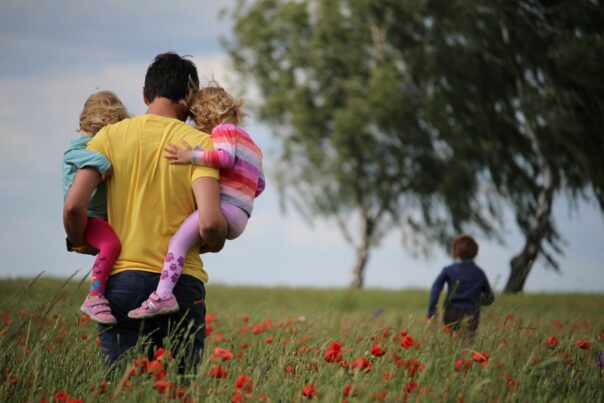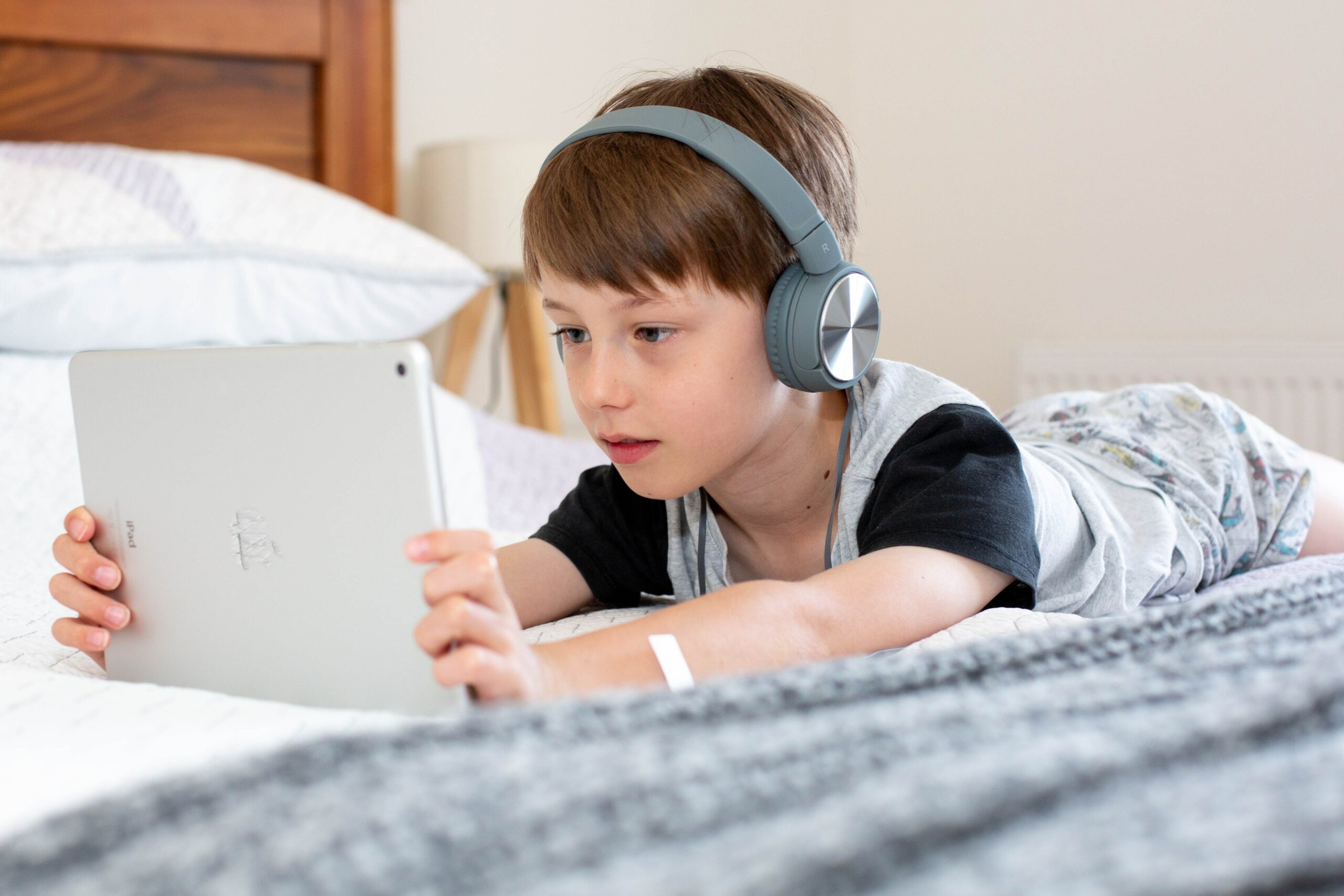 Grief is a heavy emotion, and when kids experience it, it could make their life more challenging. As adults who love and care for them, we can help them find their strength in the face of loss.
Grief is a heavy emotion, and when kids experience it, it could make their life more challenging. As adults who love and care for them, we can help them find their strength in the face of loss.
In this article, you will understand what kids go through when they’re grieving and how we can support them. (Written by Michael Vallejo)
The Importance of Helping Kids Deal with Grief
Just like adults, children experience grief in response to loss, such as the death of a loved one, divorce, moving, losing a pet or friend, etc. Grief is a complex experience and children may express this emotion depending on their age, personality, or coping mechanisms.
Parents, caregivers, and educators need to provide support to help children healthily process their grief. As kids receive support, they can gain valuable coping skills that can help them handle future losses.
It also allows them to understand that sadness is normal, which makes them feel validated.
Understanding Grief in Children
The experience of grief in children is different from that of adults since they still lack the emotional maturity to fully understand and express their feelings.
How Children Perceive Grief
Each child will understand and respond to grief and loss differently. For example, preschool-aged kids might perceive death as temporary and reversible, so they might still look for the person who has died afterward.
While school-aged children might start to understand that death is permanent, and become anxious that other loved ones might also die. They might not want to be separated from their parents and caregivers.
Teenagers have a good understanding that death is natural and a part of life, and may also take on adult responsibilities around the home. They might also be more interested in the meaning of life and death.
Common Reactions and Behaviors in Grieving Children
Children grieve differently, and sometimes you might not see it expressed properly. This is because they might not know how to put their feelings into words.
Other children may also seem strong and resilient one moment and become very distressed the next. They may express a variety of emotions from sadness, anger, confusion, guilt, and anxiety.
Here are common reactions and behaviors in grieving children:
- Sadness, which can be shown by crying one moment and playing the next
- Anger, such as getting irritable or easily irritated
- Denial, which can be shown by denying the reality of the loss
- Anxiety, which leads to worries about their safety and the safety of others
- Withdrawal from friends, family, or social activities
- Struggling academically or having difficulty concentrating
- Changes in eating habits and appetite
- Regression, or displaying behaviors associated with younger children, such as thumb-sucking or bedwetting
- Clinginess, or not wanting to be separated from parents and caregivers
The Importance of Every Tear
Many people see crying as a sign of weakness, but it’s okay to let your kids cry when they feel sad, hurt, or angry. Crying can help kids calm themselves, reduce their pain, and improve their mood. It helps them healthily process their grief.
Significance of Expressing Emotions
Emotions are part of being human, so children need to learn how to identify, understand, and express their feelings. Teaching kids about emotions and encouraging them to express their feelings is important so they can develop healthy coping skills. By doing this, they are more likely to bounce back after strong emotions and avoid developing behavioral problems, such as aggression and acting out.
Grieving is an essential process toward acceptance because it can help kids come to terms with the reality of the loss. Without expressing their emotions, they may struggle to move forward. This can result in unresolved emotional pain that can lead to more problems in the future.
Healthy Part of the Grieving Process
Crying is a healthy part of the grieving process because it allows kids to release and express their intense emotions. It also provides a respite from the pain.
According to a 2014 study, crying releases endorphins or feel-good chemicals that can help soothe pain.
Crying can also help build a sense of connection between people who are affected by grief, which can lead to empathy and understanding for kids. Lastly, crying can also be a way of honoring the person or object that was lost.
Practical Ways to Help Kids Find Strength in Grief
Helping kids find strength in grief involves providing them with love, support, understanding, and coping strategies that can help them move forward:
Encourage communication
Each child will react differently when they get news about a loss. Encourage your kid to put their thoughts and feelings about the situation into words. Allow them to ask questions and come to you when they are confused with their emotions.
Remember that grief can often feel isolating, so communication with kids can help them feel less alone. Through open communication, you can let your children feel heard, seen, and understood.
Normalize grief
It’s important to help kids understand that grief is a normal response to loss. Let them know that it will take time for them to feel better, but things will improve over time. You don’t have to hide your sadness as well, but you can express it in front of your child so they know that they are not alone.
For example, you might talk about your grief with them to help them understand that what they’re feeling is normal. You can say, “I feel sad for your grandfather’s passing. I miss him very much, and sometimes I cry. Being sad is OK because it means that he was very important to us. When I feel down, I talk to a friend and she listens to me, so I don’t feel that I am alone.”
Teach mental health coping skills
Children might not yet have the right mental health coping skills to deal with negative emotions, so it is important to start teaching them early. These skills can help them keep their feelings under control and prevent them from letting their big emotions disrupt their daily lives.
For example, when they’re feeling sad, you can ask them to think of activities that they might enjoy, such as taking the dog out for a walk. You can also help them neutralize their sadness by asking them to identify things to be grateful for. Plan activities to spend time with friends when they’re feeling lonely.
There are also many ways to cope when they’re feeling angry due to a loss. For instance, you can make them a “calm down kit” full of things they like, such as a stress ball, art supplies, or storybooks. You can also ask them to dance it out together until their emotion dissipates.
Promote self-care
Ensure that your kids are taking care of their physical health as well because grief can be overwhelming and draining. Disrupted sleep and changes in appetite can take a toll on their physical health. Engaging in self-care activities can help reduce these effects.
The best way to promote self-care is to lead by example. For example, you can set aside time for relaxation by engaging in activities such as yoga or taking a warm bath. For kids, this might involve activities such as drawing, coloring, or journaling.
Don’t forget to encourage your kids to eat healthily, get sufficient rest, and also have regular exercise.
Seek professional help if needed
Grieving takes time, even for children. But if your child’s grief becomes too overwhelming or persists for an extended period, consider seeking support from a grief counselor, therapist, or mental health professional.
Here are some signs that your child might need professional help:
- Grief symptoms that worsen with time
- Extended periods of depression or loss of interest in activities they used to enjoy
- Persistent imitation of the deceased or desire to join the person who died
- Persistent regression to younger behavior
- Substance abuse in teens
- Refusal to go to school or spend time with friends
In a 2021 study, the researchers gathered kids and teens who were dealing with prolonged grief disorder. They were randomly split into two groups, where one group received a Cognitive-Behavioral Therapy (CBT) program and the other group received supportive counseling.
Both types of treatment helped the kids, however, CBT showed better results. CBT made a significant difference in alleviating the symptoms associated with prolonged grief disorder. It also helped in easing depression, symptoms linked to post-traumatic stress disorder (PTSD), and internalizing issues.
Support through journaling
Research has shown that journaling (also call expressive writing) can help process difficult emotions because the writer has the opportunity to express and understand their feelings. The Imagine Project is a guided 7-step journaling process for all kids K-12 (and adults). The first 3 steps give the child the opportunity to write their difficult story using the word Imagine to begin every sentence. Step 4 asks them to write a new ending to their story giving the chance to find meaning and possibility in their lives. The Imagine Project is free for anyone to download from www.theimagineproject.org. Download a journal now and you can write your Imagine stories together to share your own experiences, helping your child to understand he/she isn’t alone.
Help Your Child Find Strength in Grief Through Your Love and Support
Always remember that the grieving process is different for everyone, and what works for one child may not work for another. So your main goal is to be flexible and patient as you provide support and guidance to your child.
Also, keep in mind that it’s okay to grieve alongside your child. Take care of yourself as well so you can continue to be a strong support for them.
Good luck and take care,
Michael Vallejo, LCSW, Child and Family Therapist, and Dianne Maroney, RN, MSN, Executive Director, The Imagine Project, Inc.
 For many children and teens, the idea of a future career in business can be an exciting opportunity. Pursuing a business career provides a chance to learn new skills, work with talented professionals, and make a meaningful impact on the world. And for those with disabilities, a career in business can offer a range of additional benefits, including flexibility, inclusivity, and the potential for career growth. With the right mindset, tools, and support, you’ll excel in the business world! Check out the following tips from The Imagine Project to learn how you can plan for a successful career in business.
For many children and teens, the idea of a future career in business can be an exciting opportunity. Pursuing a business career provides a chance to learn new skills, work with talented professionals, and make a meaningful impact on the world. And for those with disabilities, a career in business can offer a range of additional benefits, including flexibility, inclusivity, and the potential for career growth. With the right mindset, tools, and support, you’ll excel in the business world! Check out the following tips from The Imagine Project to learn how you can plan for a successful career in business.
 Weather-related constraints shouldn’t be roadblocks to your children’s engagement and joy. Today,
Weather-related constraints shouldn’t be roadblocks to your children’s engagement and joy. Today,  The use of artificial intelligence (AI) is becoming increasingly widespread throughout the education system, but there are mixed attitudes about whether or not it’s actually helpful. While students tend to view the technology positively, a significant number of teachers, principals and district leaders report otherwise, with
The use of artificial intelligence (AI) is becoming increasingly widespread throughout the education system, but there are mixed attitudes about whether or not it’s actually helpful. While students tend to view the technology positively, a significant number of teachers, principals and district leaders report otherwise, with  Exercise and emotional health are more interrelated than many people realize. Just as emotional wellness promotes good physical health, keeping our bodies healthy can help prevent, even heal, emotional issues. Exercise is important because it helps improve mood, self-esteem, self-image, quality of sleep, attention, academic performance, interpersonal skills, and coordination, while creating a strong healthy body. All of these are important when coping with stress and trauma.
Exercise and emotional health are more interrelated than many people realize. Just as emotional wellness promotes good physical health, keeping our bodies healthy can help prevent, even heal, emotional issues. Exercise is important because it helps improve mood, self-esteem, self-image, quality of sleep, attention, academic performance, interpersonal skills, and coordination, while creating a strong healthy body. All of these are important when coping with stress and trauma. Children are the future, and ensuring their well-being goes beyond physical health. Mental health plays a pivotal role in shaping a child’s overall development and future success. In recent years, there has been a growing awareness of the importance of children’s mental health, highlighting the need for nurturing environments that foster emotional well-being. In this blog, we will explore the significance of children’s mental health and ways to promote a positive mental outlook in our young ones.
Children are the future, and ensuring their well-being goes beyond physical health. Mental health plays a pivotal role in shaping a child’s overall development and future success. In recent years, there has been a growing awareness of the importance of children’s mental health, highlighting the need for nurturing environments that foster emotional well-being. In this blog, we will explore the significance of children’s mental health and ways to promote a positive mental outlook in our young ones. In the bustling world of technology and structured education, the value of imagination often takes a backseat. However, fostering a child’s imagination is not just about encouraging creativity; it plays a pivotal role in their mental health development. Imagination is the magical doorway through which children explore emotions, problem-solving, and self-expression, laying the foundation for robust mental well-being.
In the bustling world of technology and structured education, the value of imagination often takes a backseat. However, fostering a child’s imagination is not just about encouraging creativity; it plays a pivotal role in their mental health development. Imagination is the magical doorway through which children explore emotions, problem-solving, and self-expression, laying the foundation for robust mental well-being. In the digital age, audiobooks have emerged as a powerful educational tool, especially as an increasing number of studies have revealed a burgeoning literacy crisis in the United States. According to the Urban Institute’s National Assessment of Educational Progress, for instance,
In the digital age, audiobooks have emerged as a powerful educational tool, especially as an increasing number of studies have revealed a burgeoning literacy crisis in the United States. According to the Urban Institute’s National Assessment of Educational Progress, for instance,  Stress tends to be higher during the holidays. More to do, plan, and get done before a deadline. Even if life is fun during the holidays, people around you might be stressed and you can feel it–and so can your kids no matter what their ages. Taking extra time to practice Mindfullness is important for ourselves and our families. Mindfulness can be a great tool to keep us stay grounded so that our stress doesn’t get the best of us. The Imagine Project is a form of Mindfullness, it helps with processing how we feel, as well as centering ourselves.
Stress tends to be higher during the holidays. More to do, plan, and get done before a deadline. Even if life is fun during the holidays, people around you might be stressed and you can feel it–and so can your kids no matter what their ages. Taking extra time to practice Mindfullness is important for ourselves and our families. Mindfulness can be a great tool to keep us stay grounded so that our stress doesn’t get the best of us. The Imagine Project is a form of Mindfullness, it helps with processing how we feel, as well as centering ourselves. Grief is a heavy emotion, and when kids experience it, it could make their life more challenging. As adults who love and care for them, we can help them find their strength in the face of loss.
Grief is a heavy emotion, and when kids experience it, it could make their life more challenging. As adults who love and care for them, we can help them find their strength in the face of loss. When I go into a classroom or get in front of large groups, I often ask, “How many of you like to write?” On average, about 50% will raise their hands. With children, the younger they are, the more they like to write; the older they are, the more groans I hear.
When I go into a classroom or get in front of large groups, I often ask, “How many of you like to write?” On average, about 50% will raise their hands. With children, the younger they are, the more they like to write; the older they are, the more groans I hear.